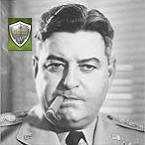ORIGINAL: Curtis Lemay
(4. The Forces: The composition of the forces is very similar. However, the Germans, thanks to their tactics, have a significant edge in movement allowances, and enjoy the benefit of the Special Forces icon on all their Stosstruppen units. Their squads tend to be a step above the Allied squads. They have a proficiency advantage as well (all of these factors are to model the Germany’s improved tactics). And the Germans are a homogeneous force, while the Allies must combine British with French – sometimes giving an edge in cooperation. The Allies, however, have a smattering of tanks and armored cars that may stiffen their resistance. Both sides have huge artillery concentrations – this was World War I, after all.
That's not really true tho - by 1918 the western allies were fully conversant with infiltration tactics and using them almost exclusively - and the British especially combined them with the pre-eminent artillery of the war to great effect.
for these German offensives many allied units were not well trained to be sure, and infiltration tactics are not much use of the defence, and the appropriate defensive tactics of defence in depth with multiple zones was particularly not much used by the 5th army.
successful allied implementation of surprise and infiltration was demonstrated by Australians at Hamel in July. Certainly such tactics could only be successfully implemented by well trained troops - which the Germans had in their initial offensives, and the allies were able to additionally use massed armour and superb artillery tactics that the Germans did not have.
it was the allied attacks from Hamel onward that are really the first "modern warfare" - the infantry-only infiltration the Germans used was but a stepping stone that lacked an all-arms approach because the Germans didn't have all arms available.
The difference shows in the strategic effects - the German offensives suffered massive casualties, especially among the highly trained stosstruppen, and eventually failed. teh allied combined arms attacks tore the German front line "a new one" from which it never recovered.
I don't think it matters too much in eth context of this game tho - since it is concerned just with the German offensives















